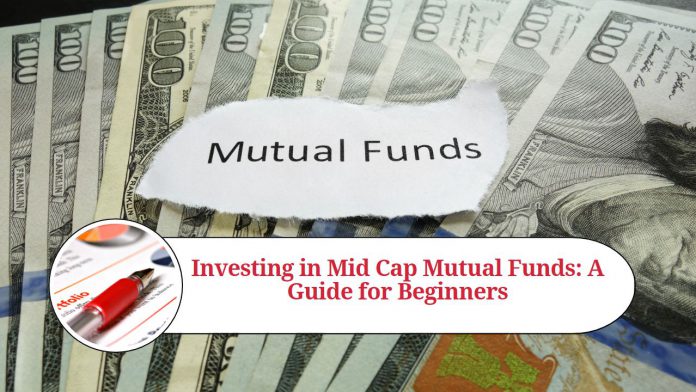When it comes to investing in mutual funds, many investors prefer to opt for large-cap funds due to their stability and predictability. However, mid-cap mutual funds can be an excellent option for investors who are willing to take on a little more risk for the potential of higher returns. In this blog, we will discuss mid-cap mutual funds, their benefits, and how to choose the right one for you.
What are Mid-Cap Mutual Funds?
Mid-cap mutual funds are a type of mutual fund that invests in stocks of mid-sized companies. These companies have a market capitalization between $2 billion and $10 billion, making them smaller than large-cap companies but larger than small-cap companies. Mid-cap mutual funds aim to provide investors with capital appreciation by investing in mid-sized companies that have the potential to grow and become larger.
Benefits of Investing in Mid-Cap Mutual Funds
- High Growth Potential: Mid-cap companies are known for their high growth potential, and mid-cap mutual funds provide investors with exposure to these companies. These companies have the potential to grow rapidly and become larger, which can lead to higher returns for investors.
- Diversification: Mid-cap mutual funds invest in a diversified portfolio of mid-sized companies, which can help reduce the overall risk of the portfolio. This diversification can help investors achieve their financial goals without taking on excessive risk.
- Lower Valuations: Mid-cap companies are often undervalued compared to their large-cap counterparts. This means that mid-cap mutual funds can provide investors with an opportunity to buy stocks at lower valuations, which can lead to higher returns over time.
- Portfolio Balance: Investing in mid-cap mutual funds can provide a balance to your portfolio. It can help you avoid the risk of being too heavily invested in large-cap companies and provide diversification benefits.
Choosing the Right Mid-Cap Mutual Fund
When choosing a mid-cap mutual fund, it’s important to consider the following factors:
- Fund Manager Experience: Look for a fund manager with a proven track record of managing mid-cap mutual funds. Check their experience and expertise in selecting mid-cap stocks.
- Expense Ratio: The expense ratio of a mutual fund is the fee charged by the fund manager for managing the portfolio. Look for a fund with a low expense ratio, as it can impact your returns.
- Historical Performance: Look at the historical performance of the fund over different market cycles. However, past performance is not an indicator of future performance.
- Investment Style: Each mid-cap mutual fund has its investment style. Some funds may focus on growth stocks, while others may focus on value stocks. Consider the investment style that aligns with your investment goals and risk tolerance.
Conclusion
Mid-cap mutual funds can be an excellent option for investors looking to diversify their portfolio and invest in high-growth potential mid-sized companies. While mid-cap mutual funds carry a little more risk than large-cap funds, the potential for higher returns can make them an attractive investment option. As with any investment, it’s essential to conduct thorough research and consult a financial advisor before investing in mid-cap mutual funds.
Read more useful content:
- How to invest in mutual funds
- Best Technology Mutual Funds
- All about mutual funds-types & importance
- The Power of SIP Investment in Mutual Funds
Frequently Asked Questions (FAQs)
Q: What are mid-cap mutual funds?
A: Mid-cap mutual funds are a type of mutual fund that invests in stocks of mid-sized companies. These companies have a market capitalization between $2 billion and $10 billion, making them smaller than large-cap companies but larger than small-cap companies.
Q: What are the benefits of investing in mid-cap mutual funds?
A: Mid-cap mutual funds provide investors with exposure to mid-sized companies that have the potential for high growth and returns. They offer diversification benefits, lower valuations, and can provide balance to a portfolio.
Q: How are mid-cap mutual funds different from large-cap mutual funds?
A: Mid-cap mutual funds invest in stocks of mid-sized companies, while large-cap mutual funds invest in stocks of large, established companies. Mid-cap companies have higher growth potential but carry more risk, while large-cap companies are more stable but may offer lower growth potential.
Q: What is the risk associated with investing in mid-cap mutual funds?
A: Mid-cap mutual funds carry more risk than large-cap funds, as mid-sized companies are more vulnerable to economic downturns and market fluctuations. However, the potential for higher returns can outweigh the risk for some investors.
Q: How do I choose the right mid-cap mutual fund?
A: When choosing a mid-cap mutual fund, consider factors such as the fund manager’s experience, expense ratio, historical performance, and investment style. Conduct thorough research and consult a financial advisor before investing.
Q: Are mid-cap mutual funds suitable for long-term investment?
A: Yes, mid-cap mutual funds can be suitable for long-term investment as mid-sized companies have the potential to grow and become larger over time, leading to higher returns. However, investors should consider their investment goals and risk tolerance before investing.




















